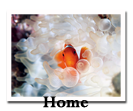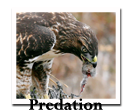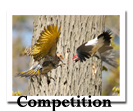 |
Symbiosis Introduction
Welcome to the symbiosis home page! Here you will read about symbiotic relationships, engage in activities, and then test your understanding through a brief assessment quiz.
3 Types of Symbiosis
Some species have very close interactions with other species. Symbiosis is a close, long-term association between two or more species. The individuals in a symbiotic relationship can benefit from, be unaffected by, or be hurt by the relationship. Typically, one species lives inside or on top of the other species. Symbiotic relationships in nature can be categorized into three types: mutualism, commensalism, and parasitism.
Mutualism
A symbiotic relationship in which both organisms benefit is called mutualism (MYOO choo uhl IZ uhm). For example, you have a type of bacteria currently living in your intestines. Although that may not sound beneficial, you are actually both gaining something from this relationship. The bacteria is getting food from your intestines and you are recieving vitamins produced by the bacteria.
Mutualism also exists between a clownfish and a sea anemone. A clownfish is getting a safe home living in the anemone, and in return, the clownfish cleans and protects the anemone from other predators.
Commensalism
A symbiotic relationship in which one organism benefits and the other is unaffected is called commensalism. One example of commensalism is the relationship between whales and barnacles. Barnacles attach to a whale's body and use it as their home. The whale does not mind the barnacles and is not affected by the relationship.
Parasitism
A symbiotic association in which one organism benefits while the other is harmed is called parasitism (PAR uh SIT IZ uhm). The organism that benefits is called the parasite and the organism that is getting hurt or sometimes killed is called the host. The parasite gets nutrients while harming the host. At times, the host may even die.
For example, the relationship between a deer and a tick is considered parasitism. The deer is the host and the tick is the parasite. The tick is benefitting from the relationship because it is extracting blood, while the deer is being harmed.




